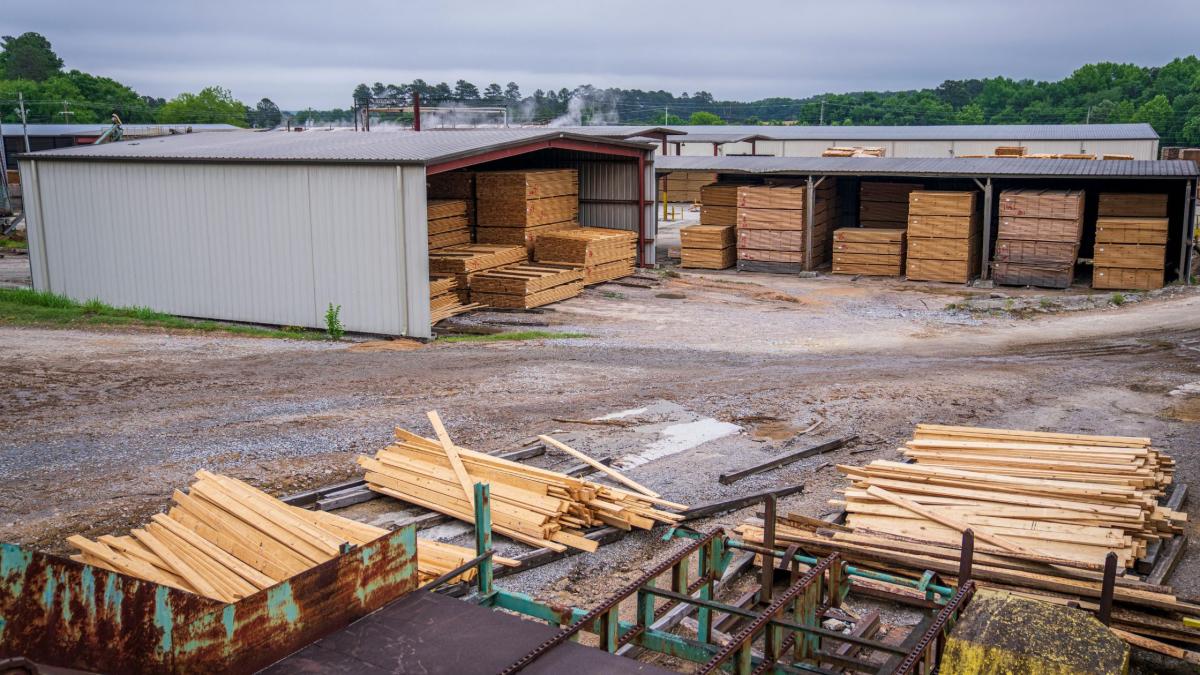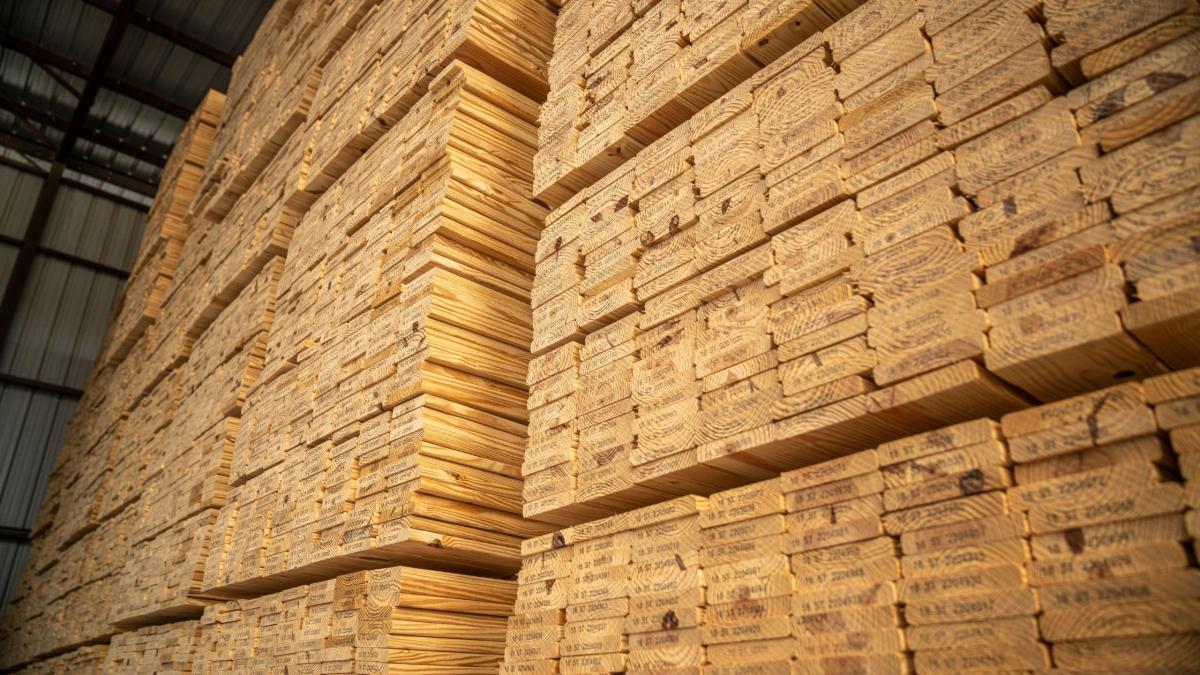Types Of Lumber Used In Construction

Lumber is the backbone of construction. Whether it is residential framing, commercial buildings, or custom carpentry, wood is essential in enhancing the strength, beauty, and durability of structures. Not all lumber is created equal, and by selecting the proper kind of lumber, you can spell the difference between a structurally sound project and one that may warp, rot, or simply fail after a short time.
For builders and contractors, knowing the right lumber types is key to both performance and cost control. By using framing takeoffs during the planning stage, professionals can ensure accurate material estimates, reducing waste, avoiding delays, and keeping the project on budget.
Softwood vs. Hardwood: The Basis of Lumber Type
There are two broad categories, before we get into the specific kinds of lumber:
1. Softwood Lumber
Softwoods are coniferous trees (evergreens such as pine, spruce, and fir). They are planted and harvested more quickly, which makes softwood lumber cheaper and more popular in construction.
Common uses:
- Framing (walls, floors, and roofs)
- Decking
- Fencing
- Sheathing and subflooring
Softwoods are easy to cut, nail, and handle, and therefore, they are the preferred choice for structural work.
2. Hardwood Lumber
Hardwoods are found in deciduous trees (such as oak, maple, and walnut) and grow more slowly. Due to this, they are normally denser, more solid, and even costly.
Common uses:
- Flooring
- Cabinetry
- Furniture
- Ornamental draft and moldings
Hardwoods find applications where appearance, durability, and resistance to wear are prime factors.
Common Types of Lumber in Construction

1. Douglas Fir
Douglas Fir is one of the most popular softwoods, and it is strong and dimensionally stable. It grips nails and does not warp.
Uses:
- Framing
- Beams
- Plywood sheathing
Advantages: powerful, long-lasting, and common.
2. Southern Yellow Pine (SYP)
SYP is a heavy softwood with a wide structural use and pressure-treated lumber product.
Uses:
- Floor joists
- Decking
- Outdoor wood that is treated
Pros: More strength compared to most other pines and takes pressure treatment.
3. Hem-Fir
Hem-Fir is a mixture of Hemlock and other species of Fir, and is appreciated due to its even texture and ease of work.
Uses:
- Interior framing
- Light construction
Pros: Inexpensive and light-colored, a good option on exposed surfaces where beauty is a concern.
4. Spruce-Pine-Fir (SPF)
This is a group of species that are usually sold together because of similar characteristics. In North America, SPF lumber is commonly used in framing.
Uses:
- Wall studs
- Roof trusses
- Subfloors
Advantages: Lightweight, workable, and cost-effective.
5. Cedar
Cedar is a softwood; however, it is naturally rot and insect resistant and is ideal to use outdoors.
Uses:
- Siding
- Shingles
- Fencing
- Decking
Pros: Smells nice, decays slowly, pretty grain patterns.
6. Redwood
Redwood is valued because of its beauty and natural moisture, and insect resistance.
Uses:
- Exterior siding
- Decks
- Outdoor furniture
Advantages: Looks good, lightweight weight and rot resistant.
7. Oak
Oak is a hardwood, durable and resistant to wear, which is utilized in quality carpentry and premium building.
Uses:
- Flooring
- Cabinets
- Trim
Pros: Extremely hard wearing, attractive grain.
8. Maple
Another smooth-textured hardwood, maple is also primarily an interior product.
Uses:
- Furniture
- Countertops
- Millwork
Pros: Hard, solid, and not easily worn down.
9. Engineered Lumber
It is not a wood species but an artificial product consisting of wood fibers, strands, or veneers bonded.
Types Include:
Plywood: It is composed of wood veneers.
Oriented Strand Board (OSB): It is manufactured using compressed wood chips and resin.
LVL (Laminated Veneer Lumber): Beams (headers and joists) with high strength.
Uses:
- Subflooring
- Roof and wall sheathing
- Beams and trusses
Advantages: Even strength, predictable behavior, and warping tendency are reduced.
Lumber Grading
Lumber is graded to determine its quality and suitability for various uses. Grades are usually divided into two broad categories:
- Structural Grades: oriented towards strength (e.g., No. 2 SPF)
- Appearance Grades: Aesthetically oriented (e.g., Select Cedar)
Structural grades are more particular about framing and load-bearing applications, whereas appearance grades are more desirable in finish work.
Pressure-Treated vs. Untreated Lumber
The pressure-treated lumber is saturated with preservatives to make it rot, decay, and insect resistant. It is necessary in places subjected to dampness or touch with soil.
Pressure-treated lumber is used for:
- Deck posts
- Sill plates
- Retaining walls
- Outdoor structures
When cutting treated wood, always use protective equipment and do not use it inside the house because of the possible release of chemicals.
Sustainable Lumber Options
As concerns about environmental impact grow, more lumber options are becoming sustainable. Look for:
- FSC-Certified Lumber: Confirmed to be responsibly sourced.
- Reclaimed Wood: Recycled wood used in old buildings and structures.
- Rapid-Growth Species: e.g., bamboo or fast-growing pine
Conclusion
Lumber is not a one-size-fits-all material. They come in various forms, each with a different purpose; some are used to add strength and support, others add beauty and durability. Learn more about the kinds of lumber available in construction, and you will be able to choose the best wood to use in your project, as well as enhance quality and prevent expensive mistakes. Framing a new house or building custom cabinets, the appropriate lumber makes your effort last through the years.
FAQs
What Is The Best Lumber For Framing A House?
SPF (Spruce-Pine-Fir) or Douglas Fir is the best lumber used in framing houses. These soft woods provide a good combination of strength, low cost, and availability.
What’s The Difference Between Dimensional Lumber And Engineered Lumber?
Dimensional lumber is the conventional wood that is cut to uniform sizes (ex., 2x4, 2x6), and engineered lumber consists of such products as plywood, OSB, and LVL, which are manufactured by gluing wood products to provide more strength and stability.
How Do I Choose The Right Lumber Grade?
When you are framing or doing other structural work, use No. 2 grade or higher. When the lumber will be visible, such as in trim or cabinetry, select or appearance lumber with few defects is best.
